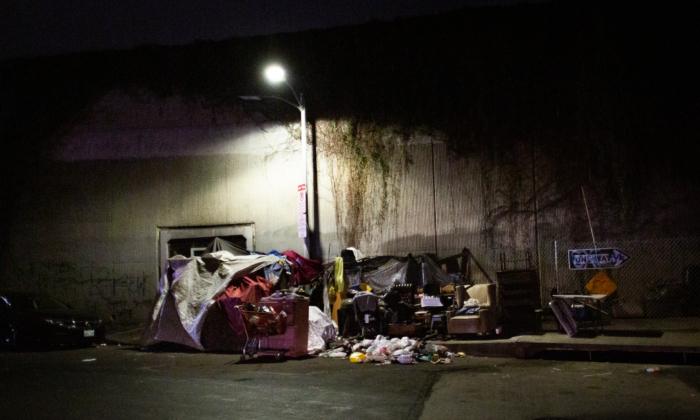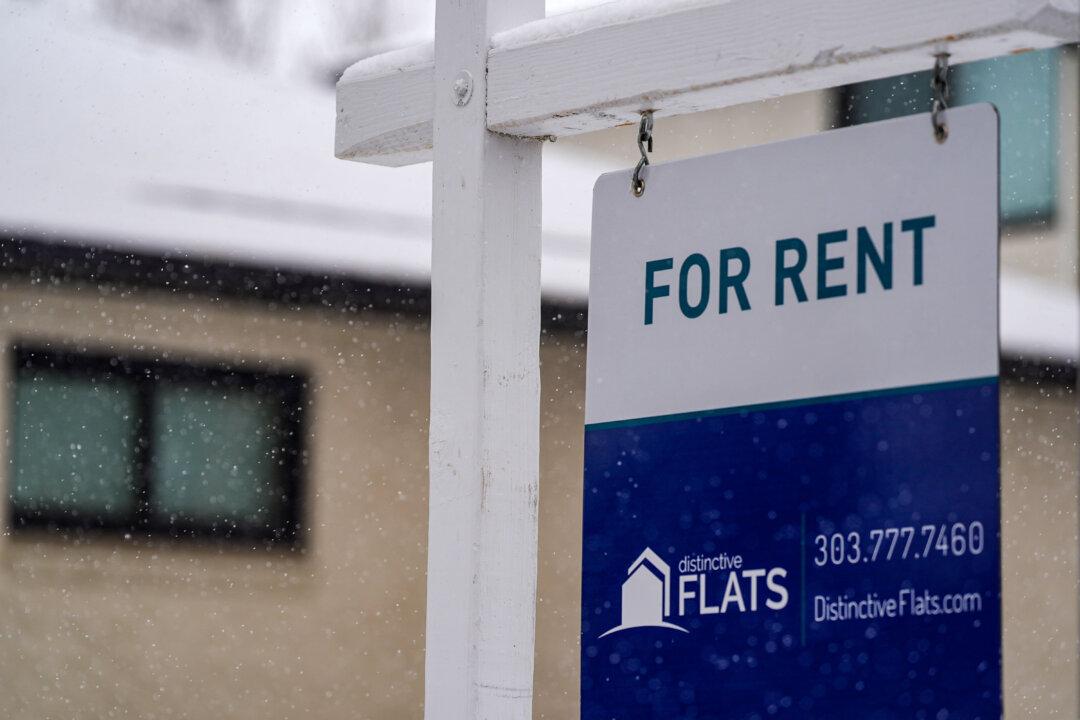The rate of overall poverty and child poverty in the United States surged last year under the Biden administration while household incomes declined, according to recently published government figures.
The Supplemental Poverty Measure (SPM) rate in 2022 rose by 4.6 percentage points, to 12.4 percent, and registered the “first increase in the overall SPM poverty rate since 2010,” said the U.S. Census Bureau on Tuesday. SPM is different from the official poverty rate as it not only takes personal income in its calculations but also incorporates government aid when considering poverty measures, including food and housing assistance as well as the COVID-19 relief measures provided during the pandemic.
The bureau attributed the 2022 increase in SPM rate “to key changes in federal tax policy, including the expiration of temporary expansions to the Child Tax Credit (CTC) and the Earned Income Tax Credit (EITC) as well as the end of pandemic-era stimulus payments.”
The CTC was expanded in July 2021 during the pandemic as part of the American Rescue Plan and provided parents between $250 and $300 a month per child. The CTC’s temporary expansion ended on Dec. 31, 2021.
The Census Bureau points out that SPM child poverty more than doubled between 2021 and 2022, rising from 5.2 to 12.4 percent.
“This represents a return to child poverty levels prior to the pandemic,” Liana Fox, an assistant division chief at the Census Bureau, said during a news conference, according to the Associated Press. “We did see the child tax credit had a substantial decrease in child poverty.”
SPM rates also rose for people in the age group of 18–64 and individuals aged 65 and older. Three states accounted for higher than the official SPM poverty rate: California, Maryland, and New Jersey.
Biden Blames Republicans, GOP’s New Expanded CTC
In the CTC expansion of 2021, the annual CTC rose from $2,000 to $3,600 for children under the age of six who qualified for the program. In addition, children under the age of 17 also became eligible for CTC, getting $3,000 per annum. Previously, only children under 16 were qualified.Earlier, there was also an earnings floor—only taxpayers making $2,500 or above could qualify for CTC. In 2021, the earnings floor was removed.
Following the Census Bureau report about a rise in child poverty, President Joe Biden placed the blame on Republicans, accusing them of ending the CTC expansion.
“Today’s Census report shows the dire consequences of congressional Republicans’ refusal to extend the enhanced Child Tax Credit … We cut child poverty by nearly half to record lows for all children in this nation largely by expanding the Child Tax Credit. Last year, Congressional Republicans insisted on raising taxes on families with children,” the president said in a statement on Sept. 12.
“The rise reported today in child poverty is no accident—it is the result of a deliberate policy choice congressional Republicans made to block help for families with children while advancing massive tax cuts for the wealthiest and largest corporations.”
Republicans opposed continuing the CTC expansion due to worries that doing so would discourage the poorest Americans—those making less than $25,000—from getting employed as they would qualify for the credit. There were also concerns that the expansion would trigger a rise in federal spending, adding more fuel to inflation.
The CTC was first introduced by Republicans and has strong bipartisan support. Republicans had also initiated a 2017 reform which doubled the CTC.
GOP lawmakers are now pushing an expanded child credit program. In July, Rep. Ashley Hinson (R-Iowa) introduced the “Providing for Life Act,” which raises the benefits under CTC.
Household Income Drops
While poverty worsened last year, median household income also declined, according to the Census Bureau. “Real median household income was $74,580 in 2022, a decrease of 2.3 percent from the 2021 estimate of $76,330,” it said. This is the third straight year that the U.S. household income has dropped.Incomes fell in white and non-Hispanic white households. In black, Asian, and Hispanic households, the income changes “were not statistically different” from 2021.
Post-tax income last year was 8.8 percent lower compared to 2021. The Census Bureau blamed the income decline on the “contraction in federal tax programs” last year.
The decline in household income has come amid elevated inflation that has eaten into people’s earnings and savings. Annual inflation was only 1.4 percent when Joe Biden became president in January 2021. It surged to 9.1 percent in June 2022, and was at 3.2 percent in July 2023.
Earlier this year, the Federal Reserve Bank of New York published reports showing that low-income households, young Americans, and less-educated individuals were more affected by inflation.
Economists at the bank pointed out that low-income groups were the hardest hit as they could not substitute cheaper goods and services and also maintained smaller cash reserves.







